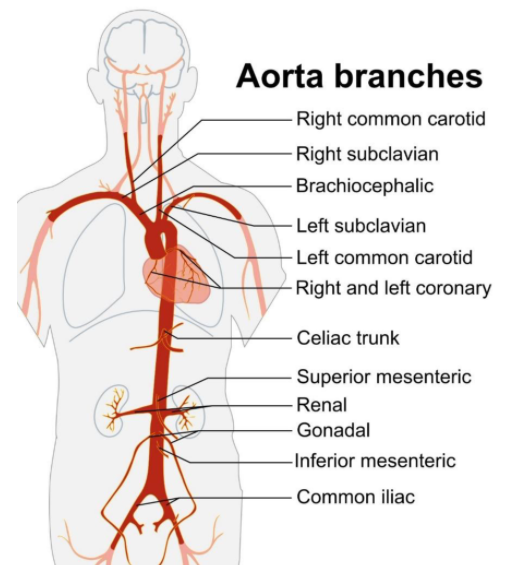
The shoulder and forelimb are connected to the heart by
A. Dorsal aorta
B. Subclavian artery
C. Esophageal artery
D. None of the above
Answer
501.9k+ views
Hint: These are a pair of huge arteries within the thorax that provide blood to the thorax itself, head, neck, shoulder, and arms. Depending on the side of the body, it can have two origins: the aorta on the left, and the brachiocephalic trunk on the right side.
Complete answer: On the left side of the body, the subclavian artery originates directly from the arch of the aorta while towards the right side of the body, the subclavian artery arises from the brachiocephalic artery.
This brachiocephalic artery is further divided into two parts i.e. the subclavian and the carotid artery.
The subclavian arteries are paired arteries that are responsible to supply blood to the posterior cerebrum, the cerebellum of the hindbrain, posterior neck, both the right and left upper limbs, and also to the superior and anterior chest wall; they are asymmetrically arranged to aid in circulation. They receive blood from the aorta.

So, the correct answer is option B. Subclavian artery.
Note: In case the subclavian arteries are blocked due to some accident or due to other reasons, then the person may experience arm pain or muscle fatigue (due to the lack of oxygen availability) when using the arms above their head or doing any activity that would require more oxygen-rich blood flow to the arms compared to normal activities. Other symptoms faced may be dizziness due to arm activity.
Complete answer: On the left side of the body, the subclavian artery originates directly from the arch of the aorta while towards the right side of the body, the subclavian artery arises from the brachiocephalic artery.
This brachiocephalic artery is further divided into two parts i.e. the subclavian and the carotid artery.
The subclavian arteries are paired arteries that are responsible to supply blood to the posterior cerebrum, the cerebellum of the hindbrain, posterior neck, both the right and left upper limbs, and also to the superior and anterior chest wall; they are asymmetrically arranged to aid in circulation. They receive blood from the aorta.

So, the correct answer is option B. Subclavian artery.
Note: In case the subclavian arteries are blocked due to some accident or due to other reasons, then the person may experience arm pain or muscle fatigue (due to the lack of oxygen availability) when using the arms above their head or doing any activity that would require more oxygen-rich blood flow to the arms compared to normal activities. Other symptoms faced may be dizziness due to arm activity.
Recently Updated Pages
Master Class 10 General Knowledge: Engaging Questions & Answers for Success

Master Class 10 Computer Science: Engaging Questions & Answers for Success

Master Class 10 Science: Engaging Questions & Answers for Success

Master Class 10 Social Science: Engaging Questions & Answers for Success

Master Class 10 Maths: Engaging Questions & Answers for Success

Master Class 10 English: Engaging Questions & Answers for Success

Trending doubts
A boat goes 24 km upstream and 28 km downstream in class 10 maths CBSE

Why is there a time difference of about 5 hours between class 10 social science CBSE

The British separated Burma Myanmar from India in 1935 class 10 social science CBSE

The Equation xxx + 2 is Satisfied when x is Equal to Class 10 Maths

Chandigarh is the capital of A Punjab B Haryana C Punjab class 10 social science CBSE

Change the following sentences into negative and interrogative class 10 english CBSE




